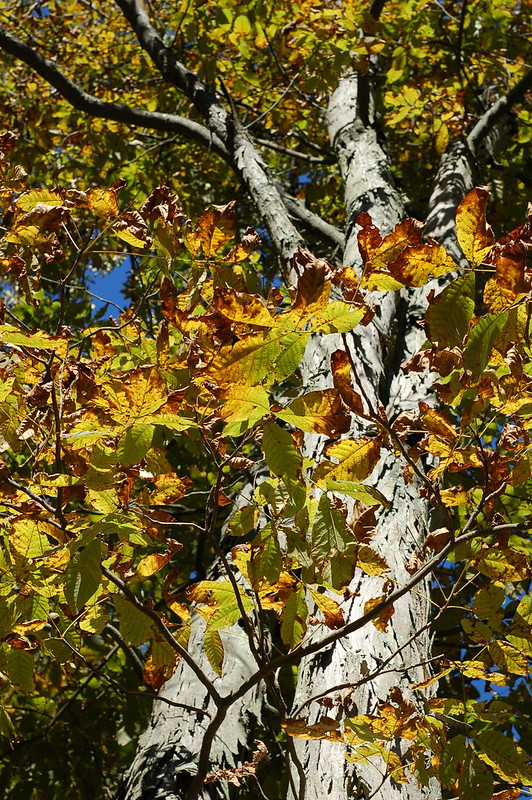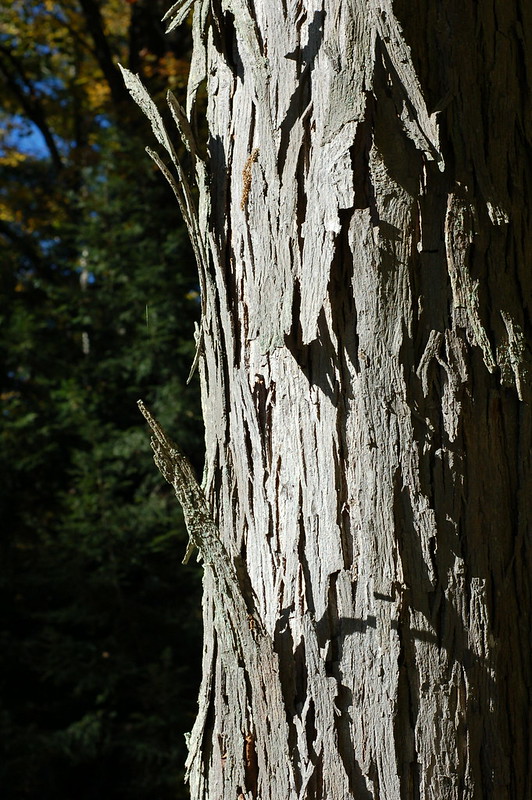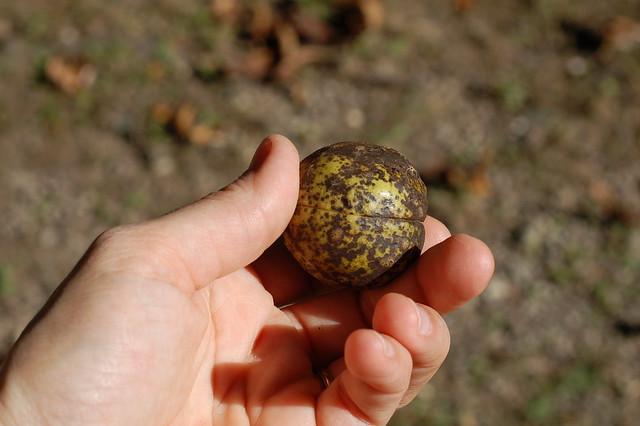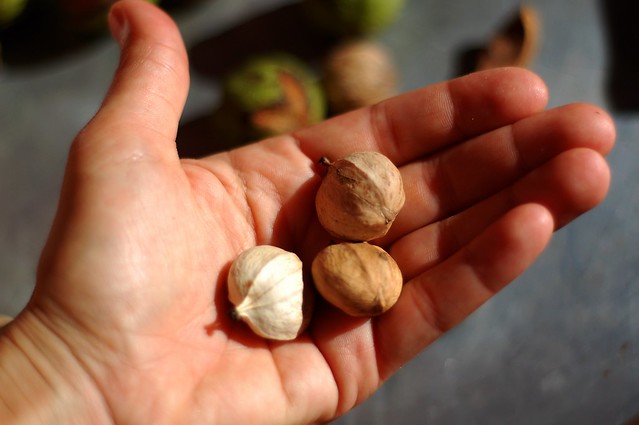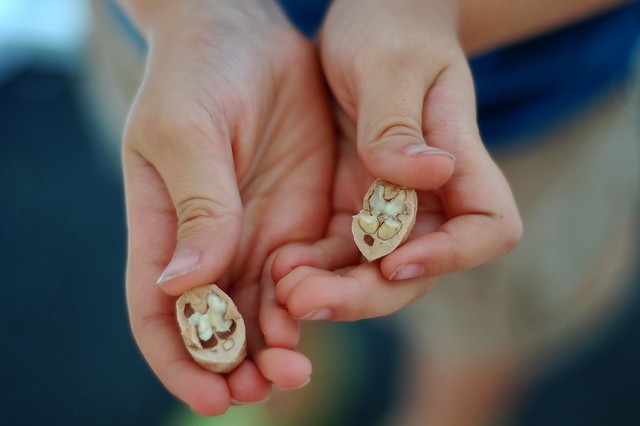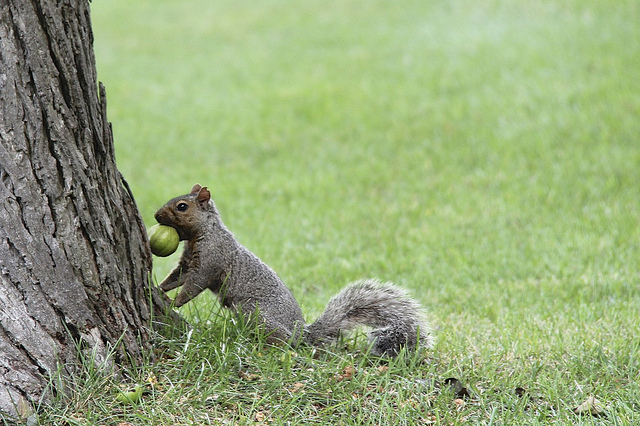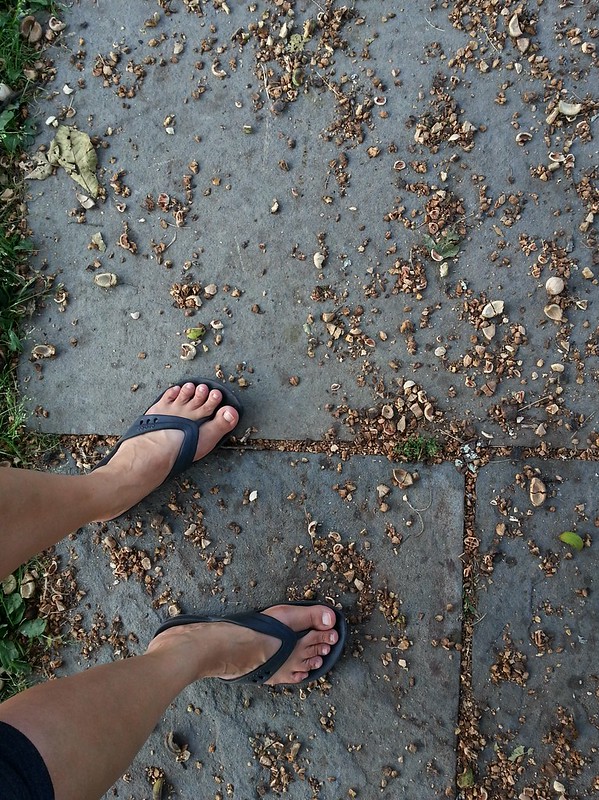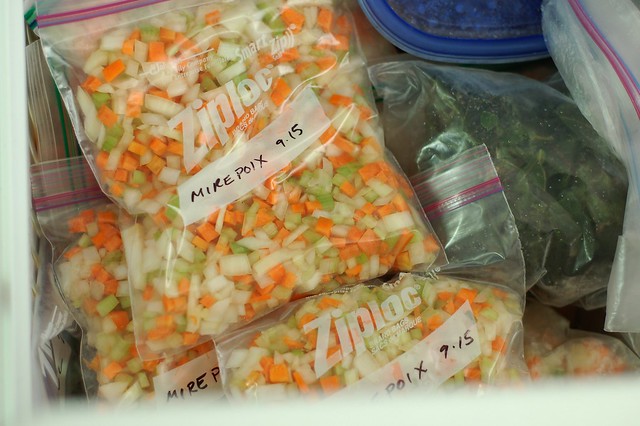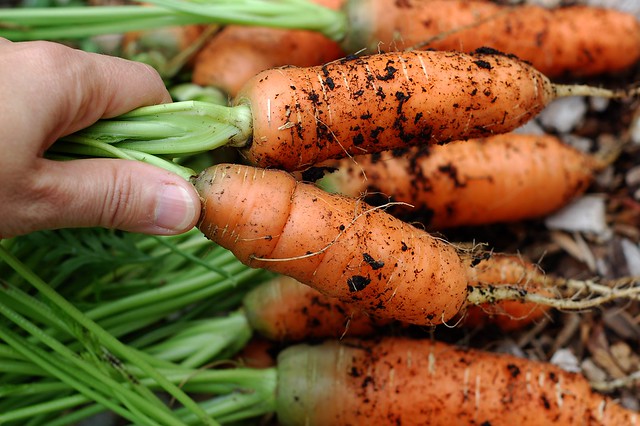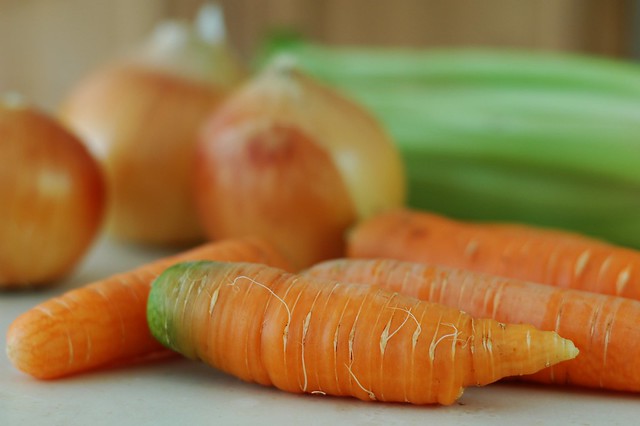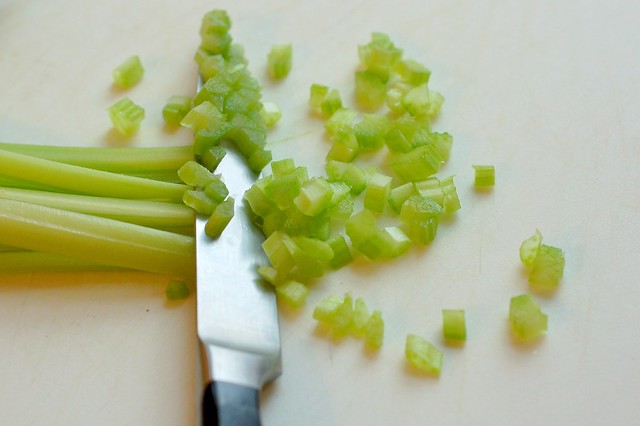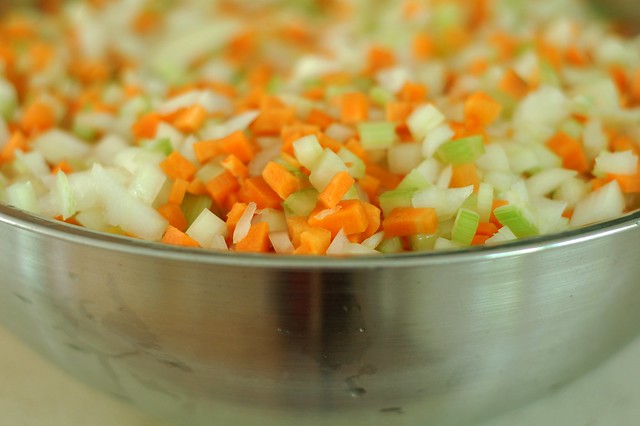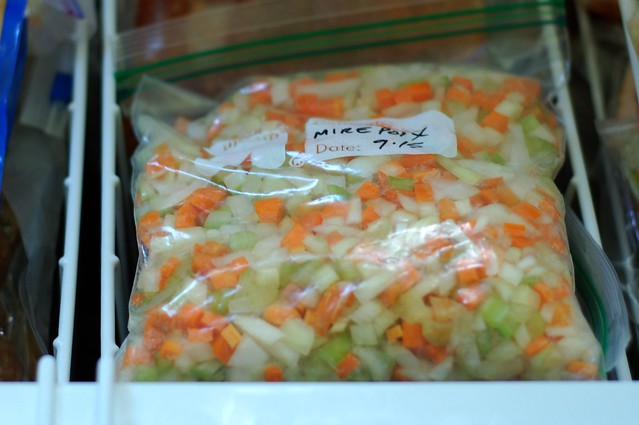Money may not grow on trees, but hickory nuts most certainly do. And, also unlike money, they are literally falling from the sky right now. Despite growing up in the country, I only recently learned that the nuts inside those big, hard, green balls that fall from the Shagbark hickory trees every fall are edible. Though "edible" really doesn't do them justice, they're absolutely delicious!
Crack open the shell and you're greeted by a warm, delicate, maple scent that hints at the delightful treat you're about to enjoy. The flavor is really similar to that of a pecan. A super fresh, flavorful pecan that you found at your feet amidst beautiful fall foliage. For free.
The Algonquians were certainly hip to hickories. In fact, the word "hickory" comes from the Algonquian word pawcohiccora which was the name they gave to a white, oily decoction they made from the nuts.
Here is what you're looking for: tall trees with shaggy, peeling bark and oval leaves with big green balls hanging off them. Those are Shagbark hickories.
The green balls will fall to the ground when they're good and ready - in my neck of the woods, this is in mid to late September. Once you see the thick green husk splitting open you'll know it's harvest time! Inside the husk, you'll find a much more refined-looking, off-white hickory shell. It's quite hard. This is the shell you need to crack.
As we don't have a nut cracker, we used a hammer which worked well. Inside the shell you'll find the meat of the hickory nut with its lovely, sweet, slightly smokey, maple smell...
I won't lie -- getting the meat out of the shell is a pain. But it's also kind of addictive... One tip I've seen several times is to crack the shells open and leave them all in a closed paper bag over night which allows the nut meats to shrink a little bit, making it slightly easier to pry them out of the shells the next day.
You can use a nut pick, a large needle, a crochet hook, or, in our case, a discarded dental tool (thoroughly sterilized, of course!) to extract the yummy nuts.
It is a decent amount of work to remove the nut meats from their shells and what you get is likely to be in pieces. But they are sublimely tasty - sweet, mapley and rich. You can use them as you would a pecan (which is a type of hickory nut, it turns out) or a walnut.They're perfect for use in cookies, candied for use in a salad, or as part of a crumbled topping for a cake or pie. I've never tried grinding them but suspect they make a delicious, rich flour.
Or you can go another route and use the bark rather than the nuts. Hickory syrup can be made from the tree's shaggy bark, using water and cane sugar. Here's a news story about a producer.
Although I haven't tried this yet, several resources suggest saving the nut husks and shells (or even harvesting them directly from the tree and using the whole thing, husks and all) to toss into your charcoal grill where they will add a nice hickory flavor to whatever you grill.
Hickory nut foraging is a great way to spend time with little people on a beautiful fall day. It's always nice to have another reason to take them out into nature. Looking for hickory nuts allows you to introduce them to tree identification and most kids love hunting for the nuts and filling a bucket or bag with them. Depending on their ages and coordination levels, they may want to try their little hands at cracking the nuts open and digging out the meats, too.
If you're in a rush, though, you can also get a big haul quickly just by scanning the roadsides. Anywhere that a big Shagbark hickory's branches hang over the road you are likely to find a windfall of nuts lying there with their husks already removed either by the impact of their fall to the ground or by the helpful wheels of a passing car.
Like all forest trees, hickories go through a boom and bust cycle in which they sometimes produce a bumper crop of nuts and sometimes almost none at all. It's a clever strategy to ensure their proliferation and has a big impact on a lot of animal species (not just squirrels and chipmunks). I'm not sure yet whether this will be what is called a "mast" year - marked by heavy hickory nut production - 2013 was a mast year, 2014 was not. Regardless, the hickory trees will still provide enough nuts for hours of fun and feasting.
Go forth and forage!
You might also like:
- Roasted Pumpkin Seeds - A Healthy Fall Treat
- Spicy Candied Pecans
- Foraging - Ideas, Recipes & Resources



